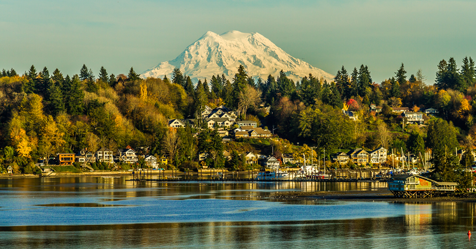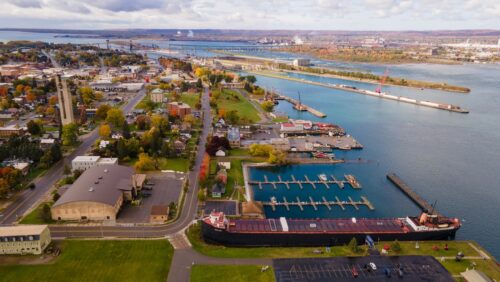Washington—one of the highest food-producing states in the nation—relies heavily on its growing immigrant population. While roughly one in seven Washington residents is foreign-born, over half of the state’s farmers, fishers, and foresters are immigrants. As neighbors, business owners, taxpayers, and workers, immigrants are an integral part of Washington’s diverse and thriving communities and make extensive contributions that benefit all.
About one in seven Washington residents is an immigrant, while another one in seven residents is a native-born U.S. citizen with at least one immigrant parent.
- In 2018, 1.1 million immigrants (foreign-born individuals) comprised 15 percent of the population.
- Washington was home to 538,989 women, 500,147 men, and 65,714 children who were immigrants.
- The top countries of origin for immigrants were Mexico (23 percent of immigrants), India (8 percent), China (7 percent), the Philippines (6 percent), and Vietnam (6 percent).
- In 2018, 1.1 million people in Washington (15 percent of the state’s population) were native-born Americans who had at least one immigrant parent.
Nearly half of all immigrants in Washington are naturalized U.S. citizens.
- 538,513 immigrants (49 percent) had naturalized as of 2018, and 185,635 immigrants were eligible to become naturalized U.S. citizens in 2017.
- More than three-fourths (79 percent) of immigrants reported speaking English “well” or “very well.”
Immigrants in Washington are distributed across the educational spectrum.
- More than a third (38 percent) of adult immigrants had a college degree or more education in 2018, while over one-fifth (22 percent) had less than a high school diploma.
|
Education Level |
Share (%) of All Immigrants |
Share (%) of All Natives |
|---|---|---|
|
College degree or more |
38 |
36 |
|
Some college |
21 |
36 |
|
High school diploma only |
19 |
22 |
|
Less than a high school diploma |
22 |
5 |
|
Source: U.S. Census Bureau, 2018 American Community Survey 1-Year Estimates. |
||
Over 170,000 U.S. citizens in Washington live with at least one family member who is undocumented.
- 240,000 undocumented immigrants comprised 23 percent of the immigrant population and 3 percent of the total state population in 2016.
- 351,016 people in Washington, including 171,602 U.S. citizens, lived with at least one undocumented family member between 2010 and 2014.
- During the same period, about one in 12 children in the state was a U.S. citizen living with at least one undocumented family member (130,326 children in total).
Washington is home to more than 16,000 Deferred Action for Childhood Arrivals (DACA) recipients.
- 16,030 active DACA recipients lived in Washington as of March 2020, while DACA has been granted to about 19,308 people in total since 2012.
- As of 2019, 63 percent of DACA-eligible immigrants in Washington had applied for DACA.
- An additional 6,000 residents of the state would satisfy all but the educational requirements for DACA, and fewer than 2,000 would become eligible as they grew older.
About one in five workers in Washington is an immigrant, together making up a vital part of the state’s labor force in a range of industries.
- 717,441 immigrant workers comprised 19 percent of the labor force in 2018.
- Immigrant workers were most numerous in the following industries:
|
Industry |
Number of Immigrant Workers |
|---|---|
|
Health Care and Social Assistance |
102,277 |
|
Professional, Scientific, and Technical Services |
90,712 |
|
Retail Trade |
83,975 |
|
Manufacturing |
74,952 |
|
Accommodation and Food Services |
65,721 |
|
Source: Analysis of the U.S. Census Bureau’s 2018 American Community Survey 1-year PUMS data by the American Immigration Council. |
|
- The largest shares of immigrant workers were in the following industries:
|
Industry |
Immigrant Share (%) |
|---|---|
|
Agriculture, Forestry, Fishing, and Hunting |
42 |
|
Administrative & Support; Waste Management; and Remediation Services |
23 |
|
Professional, Scientific, and Technical Services |
22 |
|
Transportation and Warehousing |
22 |
|
Accommodation and Food Services |
20 |
|
Source: Analysis of the U.S. Census Bureau’s 2018 American Community Survey 1-year PUMS data by the American Immigration Council. |
|
Immigrants are an integral part of the Washington workforce in a range of occupations.
- In 2018, immigrant workers were most numerous in the following occupation groups:
|
Occupation Category |
Number of Immigrant Workers |
|---|---|
|
Computer and Mathematical |
70,152 |
|
Management |
67,992 |
|
Transportation and Material Moving |
66,861 |
|
Office and Administrative Support |
58,281 |
|
Sales and Related |
55,440 |
|
Source: Analysis of the U.S. Census Bureau’s 2018 American Community Survey 1-year PUMS data by the American Immigration Council. |
|
- The largest shares of immigrant workers were in the following occupation groups:
|
Occupation Category |
Immigrant Share (%) |
|
Farming, Fishing, and Forestry |
53 |
|
Computer and Mathematical |
33 |
|
Building and Grounds Cleaning & Maintenance |
30 |
|
Healthcare Support |
23 |
|
Production |
22 |
|
Source: Analysis of the U.S. Census Bureau’s 2018 American Community Survey 1-year PUMS data by the American Immigration Council. |
|
- Undocumented immigrants comprised 5 percent of Washington’s workforce in 2016.
Immigrants in Washington have contributed billions of dollars in taxes.
- Immigrant-led households in the state paid $9.7 billion in federal taxes and $3.9 billion in state and local taxes in 2018.
- Undocumented immigrants in Washington paid an estimated $678.7 million in federal taxes and $367.9 million in state and local taxes in 2018.
- Washington DACA recipients and DACA-eligible individuals paid an estimated $49.8 million in state and local taxes in 2018.
As consumers, immigrants add tens of billions of dollars to Washington’s economy.
- Washington residents in immigrant-led households had $34.3 billion in spending power (after-tax income) in 2018.
Immigrant entrepreneurs in Washington generate billions of dollars in business revenue.
- 80,984 immigrant business owners accounted for 19 percent of all self-employed Washington residents in 2018 and generated $2.3 billion in business income.
- In the following Washington metropolitan areas in 2018, at least one in ten business owners was an immigrant. Immigrants accounted for:
- 31 percent in the Seattle/Tacoma/Bellevue metro area and
- 11 percent of business owners in Portland/Vancouver/Beaverton (which stretches from Oregon through Washington).




